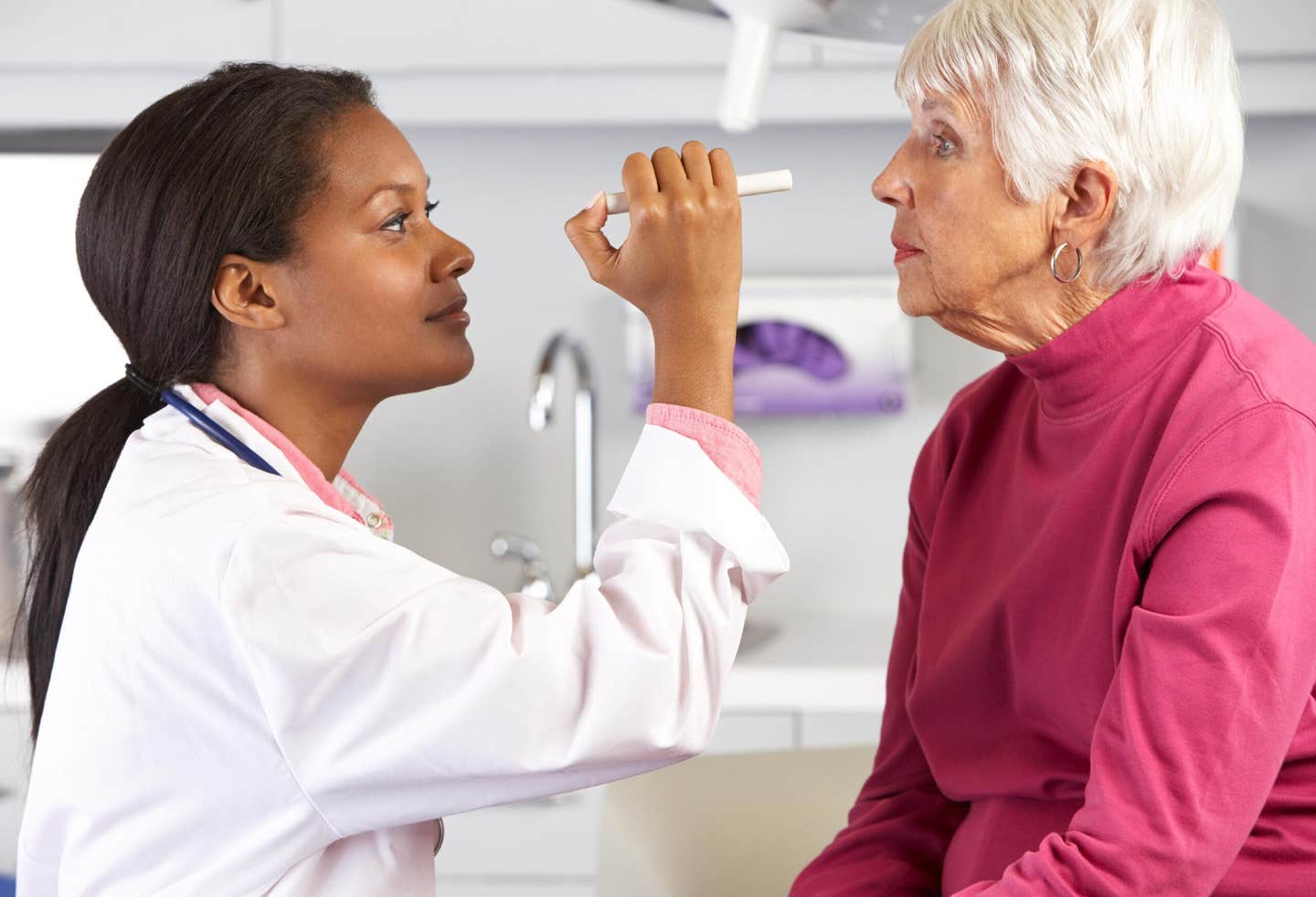Promising new drug could offer hope to millions suffering from diabetic eye disease
An experimental compound, 32-134D, has the potential to prevent or slow the progression of vision loss in people with diabetes

[May 29, 2023: Staff Writer, The Brighter Side of News]
The drops are meant for people dealing with Presbyopia, an age-related eye issue that causes blurry vision. (Credit: Creative Commons)
New research from the Wilmer Eye Institute at Johns Hopkins Medicine suggests that an experimental compound, 32-134D, has the potential to prevent or slow the progression of vision loss in people with diabetes.
This groundbreaking discovery could have significant implications for the nearly 8 million Americans who are affected by diabetes-related vision loss, a number that is expected to double by 2040, according to projections from the National Institutes of Health.
Diabetes often leads to serious eye conditions such as proliferative diabetic retinopathy and diabetic macular edema, which can cause severe vision loss and even blindness. Both conditions involve damage to the retina—the light-sensitive tissue at the back of the eye responsible for transmitting vision signals to the brain.
Proliferative diabetic retinopathy results in the overgrowth of new blood vessels on the retina's surface, leading to bleeding, retinal detachments, and significant vision loss. In contrast, diabetic macular edema causes blood vessels in the eye to leak fluid, resulting in swelling of the central retina and damaging the retinal cells that are crucial for central vision.
Related News
Findings from the study, which were published in the Journal of Clinical Investigation, reveal that 32-134D, a compound previously demonstrated to slow liver tumor growth in mice, effectively prevented diabetic retinal vascular disease by reducing levels of a protein called HIF, or hypoxia-inducible factor.
The team also found that the dosages of 32-134D used were safer than another HIF-targeting treatment currently under investigation for diabetic eye disease.
At present, the standard treatment for both proliferative diabetic retinopathy and diabetic macular edema involves eye injections of anti-vascular endothelial growth factor (anti-VEGF) therapies. These therapies aim to halt the growth and leakiness of blood vessels in the retina in patients with diabetes.
However, these treatments are ineffective for many patients and can cause detrimental side effects such as increased internal eye pressure or eye tissue damage with prolonged use.
Graphical Abstract: Accumulation of HIFs and HIF-regulated vasoactive mediators in hyperglycemic animals was observed in the absence of tissue hypoxia, suggesting that targeting HIFs may be an effective early treatment for diabetic retinopathy. (CREDIT: The Journal of Clinical Investigation)
In discussing these results, one of the study's authors, Akrit Sodhi, M.D., Ph.D., pointed out that the idea of inhibiting HIF—a crucial protein in the body—has traditionally sparked concerns about toxicity to various tissues and organs. However, Sodhi and his team found that 32-134D was exceptionally well-tolerated in the eyes and effectively reduced HIF levels in diseased eyes.
"HIF, a type of protein known as a transcription factor, has the ability to switch certain genes, including vascular endothelial growth factor (VEGF), on or off throughout the body," Sodhi explains. Elevated HIF levels in the eye cause genes like VEGF to increase blood vessel production and leakiness in the retina, thereby contributing to vision loss.
Intraocular administration of 32-134D prevented retinal neovascularization and vascular hyperpermeability in mice. (CREDIT: The Journal of Clinical Investigation)
To assess the efficacy of 32-134D, researchers administered doses to various types of human retinal cell lines linked to the expression of proteins that promote blood vessel production and leakiness. Following treatment with 32-134D, they found that the expression of genes regulated by HIF had returned to near-normal levels—sufficient to halt new blood vessel creation and maintain the structural integrity of existing blood vessels.
Further tests were conducted on two different adult mouse models of diabetic eye disease. Injections of 32-134D were administered into the eye of each model. Five days after injection, researchers noticed diminished levels of HIF and found that the drug effectively inhibited the creation of new blood vessels and blocked vessel leakage, thereby slowing the progression of the animals' eye disease.
Diabetic retinopathy refers to diabetes-induced eye conditions that affect the retina. When not controlled, high blood sugar levels cause blood vessels in the retina to swell and leak. (CREDIT: Creative Commons)
The research team, led by Sodhi, was also pleasantly surprised to discover that 32-134D remained at active levels in the retina for about 12 days following a single injection, without causing retinal cell death or tissue wasting. This promising result indicates that 32-134D may offer a viable long-term treatment option for diabetic eye disease.
Sodhi emphasizes the importance of this finding, noting, "This paper highlights how inhibiting HIF with 32-134D is not just a potentially effective therapeutic approach, but a safe one, too. People facing diabetic eye disease and vision loss include our family members, friends, co-workers—this is a disease that impacts a large group of people. Having safer therapies is critical for this growing population of patients."
While these initial results are promising, Sodhi cautions that further studies in animal models are necessary before clinical trials can commence. Still, this discovery offers a glimmer of hope for millions affected by diabetic eye disease and could revolutionize the way we approach treating this condition in the future. The implications of this research, both in terms of patient quality of life and healthcare economics, are profound and far-reaching.
Note: Materials provided above by The Brighter Side of News. Content may be edited for style and length.
Like these kind of feel good stories? Get the Brighter Side of News' newsletter.



